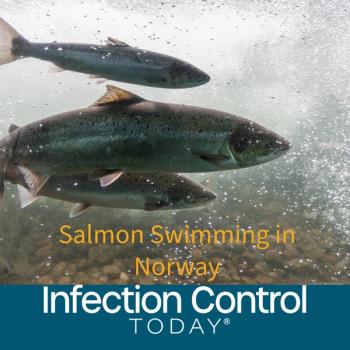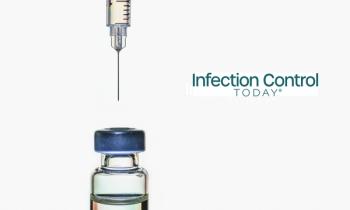
- Infection Control Today, November 2020 (Vol. 24, No. 9)
- Volume 24
- Issue 9
Q&A: IPs Need to Get More Involved in Endoscope Disinfection
Melinda Benedict, MS, CIC, CFER: “I think for infection preventionists: If you’re not already involved in your endoscopy department or you haven’t been invited in, see if you can get in and just continue to check it out and see what’s going on, especially if the reprocessing and cleaning of the scope is actually done within that clinic.”
The disinfecting process for endoscopes can use some oversight from infection preventionists (IPs), says Melinda Benedict, MS, CIC, CFER, the global senior manager of infection prevention at Olympus, a company that manufactures endoscopes. Benedict tells Infection Control Today® that “there’s a lot of room in endoscope reprocessing for infection preventionists to really come in and offer their really unique perspectives and form this multidisciplinary team that is really needed and really helps to promote patient safety.” Benedict says that she’s noticed a shift in which this relatively new idea to expand an IP’s job description seems to be gaining more traction in hospitals. For instance, she’s seen a “very noticeable increase in the number of lectures and programs specifically geared toward infection preventionists to teach them about flexible endoscopy and reprocessing flexible endoscopes….”
Infection Control Today®: In what ways you see infection professionals becoming more involved with sampling and culturing in the future?
Melinda Benedict, MS, CIC, CFER: I think any infection preventionist who has oversight of an area in their facility that uses flexible endoscopes, reusable flexible endoscopes, will, if they aren’t already involved in this, will eventually be pulled into this area. Really, the reason for that is patient safety. Infection preventionists are always cognizant of patient safety, and that is really their role in the hospital. So, the purpose of an endoscope sampling and culturing program is really to detect possible microbial contamination on an endoscope. This is most often performed on a type of endoscope that performs specialty procedures called a duodenoscope. And a lot of facilities that use duodenoscopes are interested in sampling and culturing. It really is possible to do this with any type of endoscope. And it may seem simple enough. There’s endoscope sampling and culturing protocol, but it really is a multi-step process. And above all, it’s a learning experience. If you haven’t ever done sampling or had experience with this, it really takes a multidisciplinary team to come together and design and manage and implement these types of programs and infection preventionists…. I always recommend that a facility pull in their IPs because the IPs really fill a knowledge gap that other areas and other people in your facility may not have, especially when it comes to microbiology. What are harmful bugs? What are bugs that may be environmental, and not so harmful? And really, how to take a laboratory report and read it and analyze it and understand what it says. And I think that’s why IPs are so important in this type of program.
ICT®: There have been some breakthroughs with duodenoscopes recently. Isn’t there a push to make them, or at least parts of them, disposable?
Benedict: That sounds like it’s from an FDA communication and they did state that there should be a gradual movement either toward single-use duodenoscopes or duodenoscopes with single-use components. Olympus has really filled that role. We just came out with a new model that has a disposable end cap that sort of allows the person that is cleaning the duodenoscope to uncover some of the smaller mechanic portions of that scope in order to really get in there and visualize what they’re cleaning with a brush. Kind of in order to improve human factors really in reprocessing scopes. So, at no point does the FDA say you must use a single-use scope. Reusable endoscopes, and reprocessing reusable endoscopes using high-level disinfection or sterilization should a facility have that capability or already be doing that is so absolutely acceptable. I think another way infection preventionists can really play a role in getting more involved in their endoscopy department is by going in and seeing if they can help with the reprocessing of reusable endoscopes. Whether that’s a duodenoscope or any other model. There are opportunities to go in and audit that process to make sure all of the reprocessing technicians are really using best practices as far as society guidelines and the manufacturer’s guidelines.
ICT®: Are hospitals more and more inviting infection preventionists to be a part of this process?
Benedict: If the departments that are handling endoscopes aren’t inviting the IPs in, I think the IPs should really be proactive and seeing if they can reach out to help. Right now, as far as who’s actually cleaning, reprocessing, disinfecting, decontaminating endoscopes, it really seems to be different depending on which facility you go into. So, you have ambulatory surgical centers where everything is really right there—centralized—and one usually smaller location where the reprocessing is done by a tech or a nurse or maybe a medical assistant kind of right next door in a room. All the way through to larger hospital systems that may be sending their flexible endoscopes down into central sterile to be reprocessed or even off site. We’ve heard of some larger facilities really centering all of their medical device reprocessing into one facility that may be down the street or across town and those endoscopes have to move over to that location. One of the benefits in doing something like that is that you centralize all of these same types of tasks and you can have a more specialized workforce really doing those kinds of duties and becoming their experts in their jobs in cleaning and reprocessing medical devices.
ICT®: Is there a national guideline for how to actually do this?
Benedict: There are actually several national guidelines. Professional societies will put out guidelines on endoscope reprocessing. Facilities really should be not only taking into account the endoscope manufacturers IFU [instructions for use] but also the manuals on how to use any other equipment they may be using during that reprocessing journey. There are smaller pieces of equipment like flushing pumps, or they’re actually automated endoscope reprocessors, you can think of them as endoscope washing machines. All of those instructions need to be built into the internal protocol at the facility level. But then also we always recommend that the facility follow at least one professional society guidelines specifically written about endoscope reprocessing. And there are four or five of these, and they’re very similar in nature. The CDC has one. Then we have organizations such as
ICT®: What made you conclude that it might be a good idea to have infection preventionists involved in this process?
Benedict: I think infection preventionists offer a different perspective. Often reprocessing technicians, they’re not typically nurses. They’re essentially sterile reprocessing type of employees. And depending on who oversees them, it may be a nurse manager who really focuses on the procedural aspect of endoscopy or an SPD manager that may have a lot of expertise in medical device manufacturer or medical device reprocessing. But the infection preventionist can really go in almost as a consultant and consult on is the IFU being followed as written. Are people using good aseptic or sterile techniques should that be needed? And that is something that really comes into play specifically for an endoscope sampling and culturing program. In order to get a good sample from an endoscope, it is a little bit of a logistically difficult process because you’re trying to take a microbiological sample from a five-foot-long tube. And depending on who is actually taking the sample, whether they are technicians and may not have ever had good training in aseptic and sterile technique, this is where infection preventionists—because most of them not only have that IP background, but a nursing background or lab background or something similar—can come in as a third party, as a third third set of eyes, and really see things from a different perspective and put their unique expertise to use.
ICT®: Have you actually seen this work on the ground?
Benedict: Yes. So, Olympus does do sampling and culturing studies out there, with we’re gearing up for one right now on duodenoscopes. And many of the facilities have agreed to work with us on these studies. The infection preventionist is the most integral player in these studies.
ICT®: Is that new or has that always been the case?
Benedict: I think it’s relatively new in the last few years. I think typically in the past infection preventionists were very concerned about operating room sterility. Things like catheters and central line infections, things like that. Almost population epidemiology within their facility. But I think as the world of endoscopy kind of grows in itself…. Concerns tend to pop up over reprocessing of endoscopes. There are studies that are coming out looking at that. I think as a function of that, infection preventionists get pulled in because there is a very large kind of infection prevention idea behind reprocessing medical devices and reusable medical devices, especially a flexible endoscope. I think it’s a natural transition. And I’ve been to a few
ICT®: Do you think infection preventionists will be greeted with open arms or might there be some kind of turf problem? There’s always turf problem, right?
Benedict:I know and, honestly, I’m not sure. I think everybody would like to think that it’s a very harmonious relationship between IPs and the departments they oversee. I am hoping it is like that for everybody.
ICT®: Any final words for infection preventionists?
Benedict: I think for infection preventionists: If you’re not already involved in your endoscopy department or you haven’t been invited in, see if you can get in and just continue to check it out and see what’s going on, especially if the reprocessing and cleaning of the scope is actually done within that clinic. If it’s done in another location, and you may already be involved in something else there, see if you can take a peek over there. I think there’s a lot of room in endoscope reprocessing for infection preventionists to really come in and offer their really unique perspectives and form this multidisciplinary team that is really needed and really helps to promote patient safety.
This interview has been edited for clarity and length.
Articles in this issue
about 5 years ago
Bug of the Month: I’m Riding the Anti-Vax Wave in My Comebackabout 5 years ago
Innovations Needed for Personal Protective Equipmentabout 5 years ago
Tracking of Healthcare-Acquired Infections Continues to Evolveabout 5 years ago
Novel Initiative Keeps Nursing Home Residents Safe From COVID-19about 5 years ago
Taking Aim at Antibiotic-Resistant Bacteria During COVIDabout 5 years ago
When It Comes to COVID-19 Disinfectants: Use With CareNewsletter
Stay prepared and protected with Infection Control Today's newsletter, delivering essential updates, best practices, and expert insights for infection preventionists.




